To the Mexica (or Aztec), souls exist after death, resting in Mictlan, the land of the dead, until the day each year when they could return home to visit their loved ones.
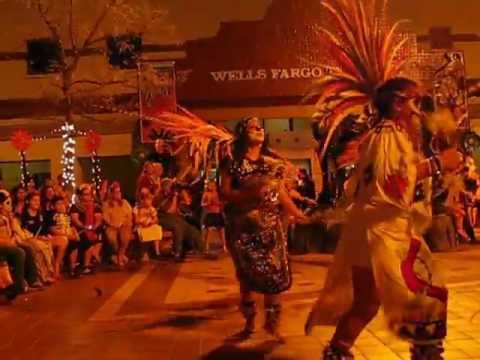
Watch this video on YouTube
Day of the Dead invocation from Danza Azteca Xocoyote at the Autry in Los Angeles. The holiday blends Meso-American indigenous Nahua traditions (Aztecs, Toltecas, Tlaxcaltec, Chichimec, Tecpanec as well as the non-Nahua Maya) with Roman Catholic sensibilities, where death becomes a colorful dance and souls never die, they rest in Mictlan.
Aztec Origins of Día de los Muertos
When the Spaniards arrived in Mexico they encountered native Nahua people‘s extended celebrations honoring death and the fall harvest. For more than 500 years, the goddess Mictecacihuatl (Lady of the Dead) presided over Aztec harvest rituals using fires and copal pom incense, costumes of animal skins, images of their dead and offerings of ceramics, personal goods, flowers, foods, and drink. Previously it fell on the ninth month of the Aztec Solar Calendar, approximately the beginning of August (Miccailhuitontli), and was celebrated for the entire month.
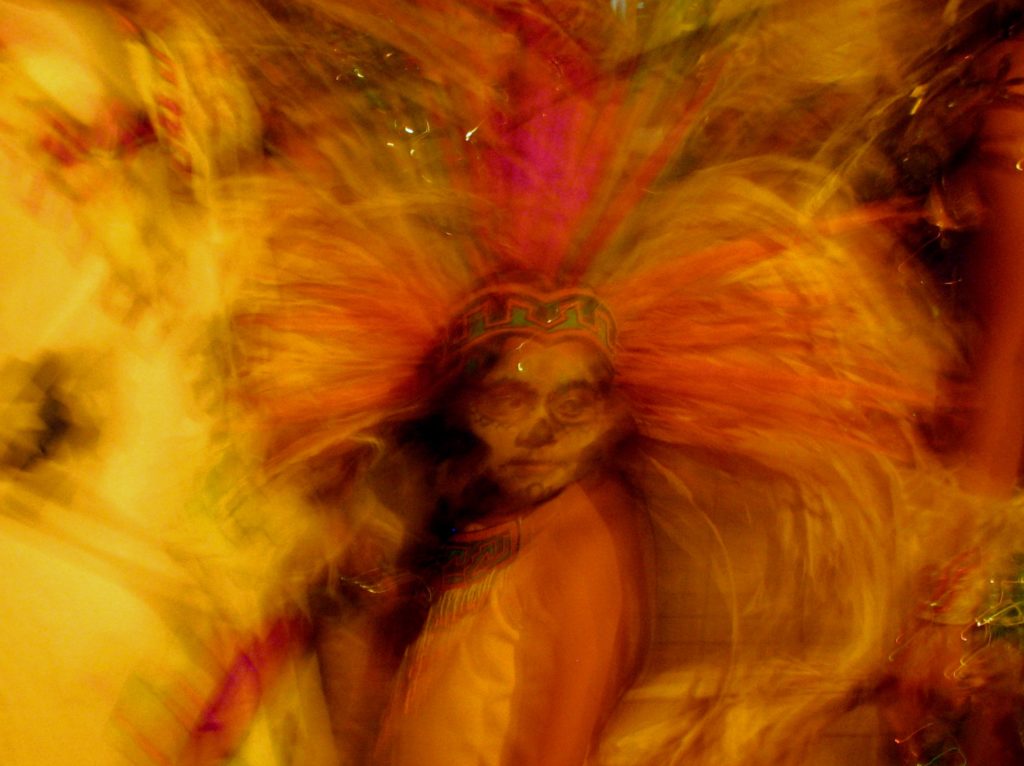

STORY: Mythological Journey to the Aztec Underworld
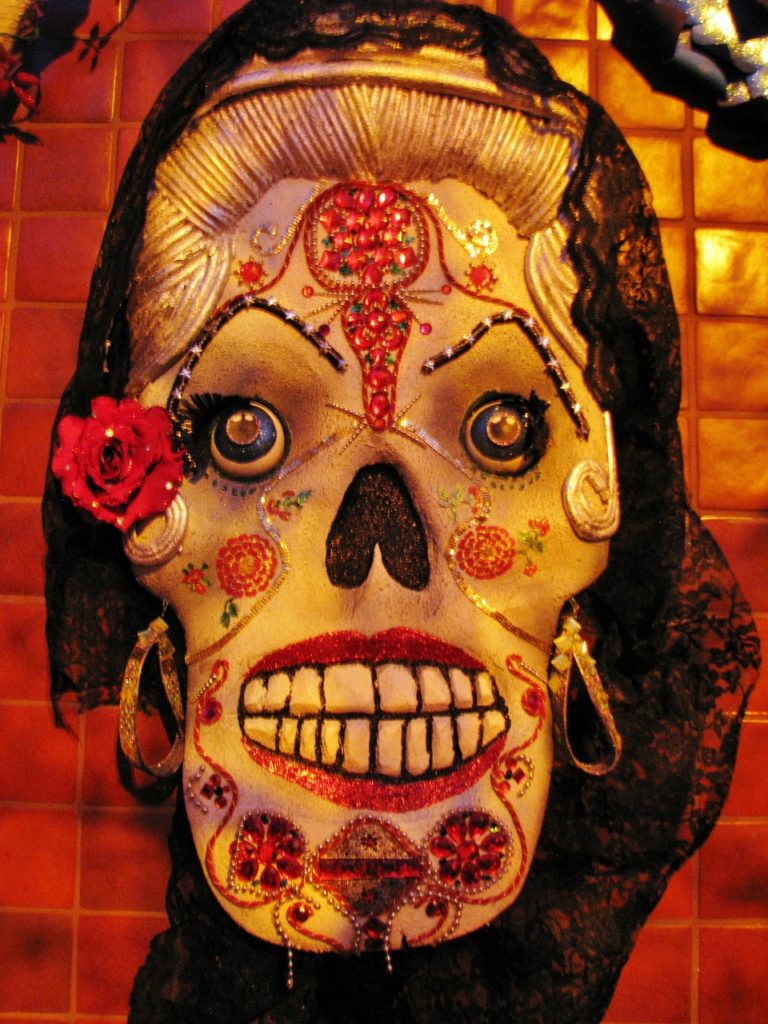

The Aztec, Maya and other indigenous traditions have enriched the Mexican’s attitude about death. In the pre-Hispanic era, skulls were kept as trophies and displayed during the rituals to symbolize death and rebirth. These ancestors passed down the knowledge that souls exist after death, resting in Mictlán, the land of the dead, not for judgment or resurrection, but for the day each year when they could return home to visit their loved ones.
STORY: Aztec Myth: Quetzalcoatl Rescues Humanity in the Land of the Dead
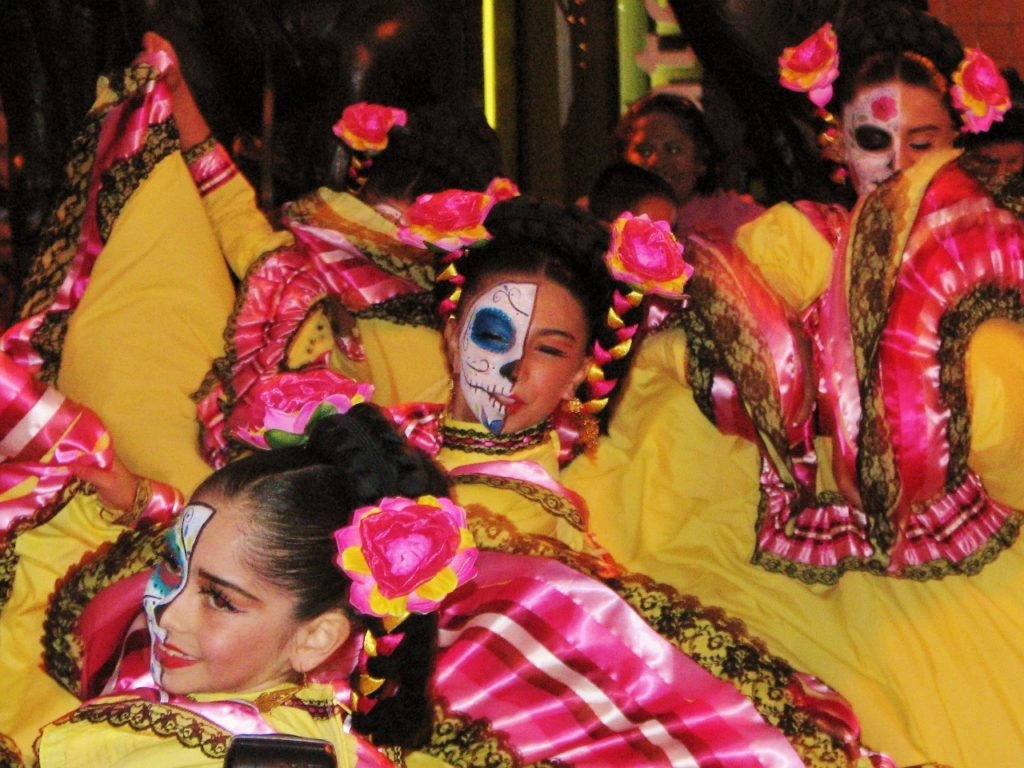

In the cemeteries, grave sites are groomed and decorated with marigold petals, colorful wreaths and streamers. Local musicians go from grave to grave and people sing “calaveras,” songs often self-composed that range from fun to morose. A priest may be present to pray with the families. The celebration follows as such:
- The eve of 31 October the souls of departed children (“los angelitos”) arrive.
- They are hosted at home on 1 November, the “Dia de Muertos Chiquitos.” That evening, the “Night of Mourning” (“Noche de Duelo”), a candlelight procession leads them back to the cemetery. Sometime during this day, the souls of the adults arrive.
- The adult souls are celebrated on 2 November at their grave sites. They leave that evening after a family meal.
STORY: Is Day of the Dead Culture in SF’s Mission Endangered?
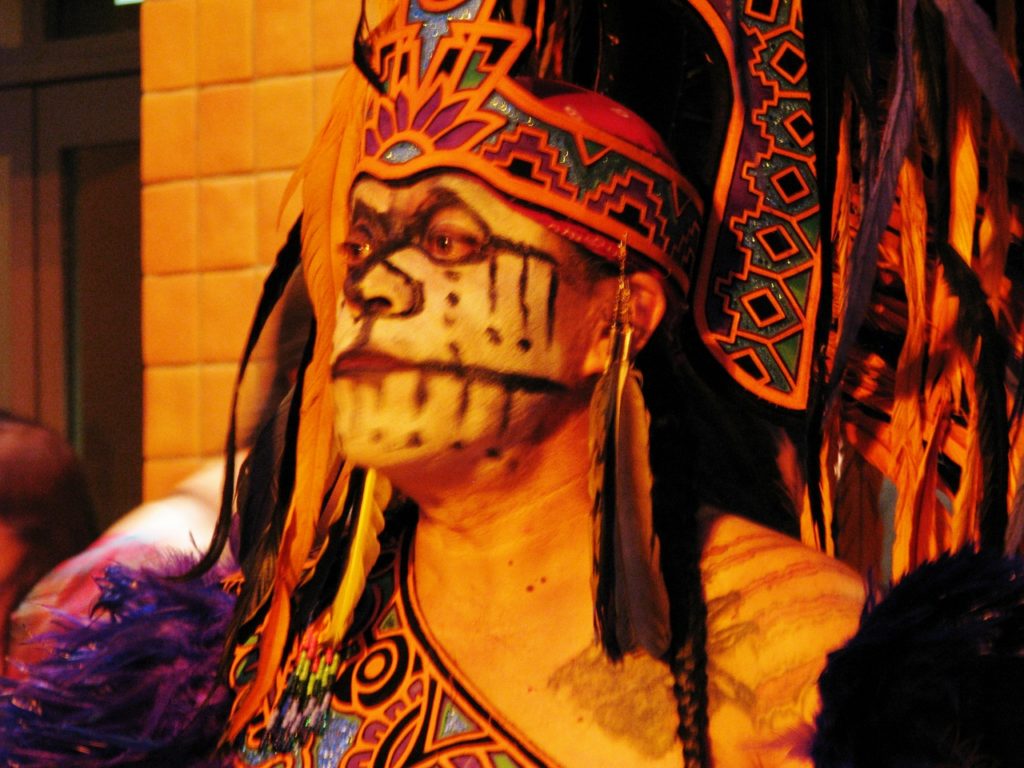

Photography by Jessica Aldridge
Updated 22 October 2023

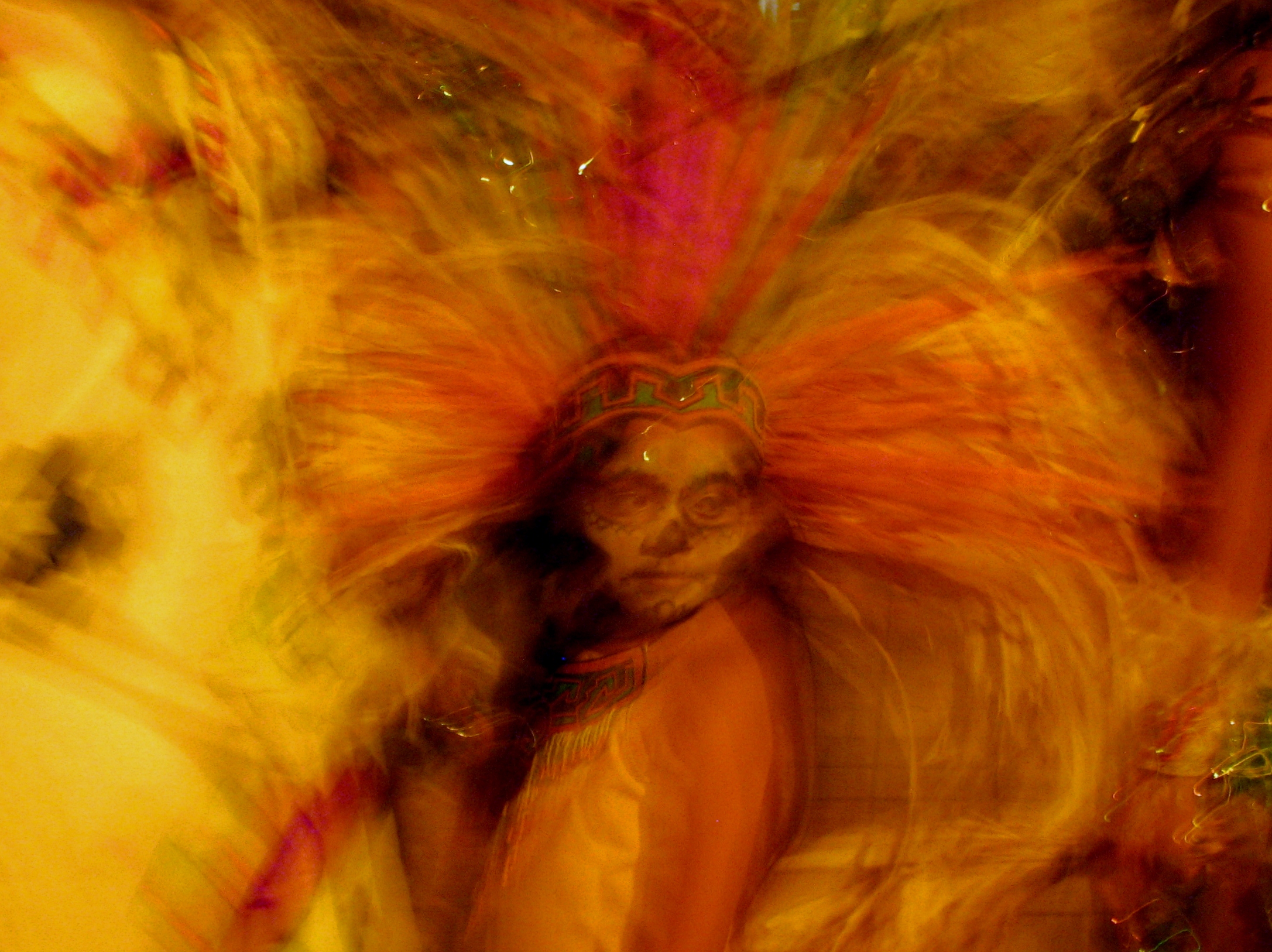








Pingback: Tibetan Skeleton Dance: Cemetery Protectors of Truth | WilderUtopia.com
Hello my name is Salvador Silva I’m a high school student in Atwater ,ca.I wanted to know if i could get permission to use this article and pictures for a class project. Thank you,
You are very welcome, Salvador. Thank you for checking in.
me too please 🙂
I just wanted to ask if i could reference your article for school purposes. i would greatly appreciate it
Most definitely, Manuel. Thanks for checking in!
Pingback: Is Day of the Dead Culture in the SF's Mission Endangered? | WilderUtopia.com
hey just wondering if i could use parts of this article for a school project thanks.
Yes!
Hi i was wondering if i could use parts of your article for a school paper, thank you.
Yes, please!
Hello Jack,
My name is Manuel Jaramillo, I’m doing a paper on origins of Dia de Los Muertos.
I would like permission to use some of your article.
Yes! Please!
Hey my name is Alex and i was wondering if i could use your information for my term paper
Yes!
Hello my name is Kassandra, and i wanted to ask if i was able to use some of your information for a school paper. it would be greatly appreciated.
Please! Feel free…
Would I please be able to use some of you information to use in a project of mine for girl guides please?
hello mr. Jack Eidt, first of all, this was a very informative article. I am deeply fascinated with my Aztec culture. I was wondering If I could get permission to use one of your pictures for an art project that I have coming up. To be specific, the girl at the top of the article. It is an amazing shot. Please
You have permission! Photo by Jessica Aldridge…
Hello Jack Eidt, I was wondering where I could find the sources that you used to write this article. I am writing a research essay and am very curious as to where to find the time in which the tradition was celebrated.
Hi Johan. Thank you for your comment. I have written multiple articles published on this site on Day of the Dead, but all the information was obtained from conversations with people at events that I covered and photographed, but for some Wikipedia and general web links. As for time period, today Day of the Dead is celebrated across Mexico and into the United States, but approaches and customs definitely vary. As for the original Nahua/Aztec/Mexica traditions, they come forward as rooted presences for so many of the communities involved.
Pingback: Mythological Journey to the Aztec Lands of the Dead | WilderUtopia.com
Hello Mr. Eidt, I just start writing comments and essays on different subjects and I’m doing one on Dia de Los Muertos, for this month. I really appreciate all the info you put out there, especially the pronunciation of some of the deities. I’m intrigued by the name of your web address. My underlying thoughts are (All or Not at All), which kind of implies the same sentiments as your subtitle. (Coexisting into the Great Unknown), so I really appreciate what you do. Are history and time periods of events make a big difference in understanding who we are today. Just starting a monthly post so I been looking for more inclusive ways to write the facts. As you say approaches and geographical customs do vary. Thanks again, have a great day.
Santiago Camarena
Thanks for your help this’s Site was very helpful
hey do you have a artical on catholic day of the dead